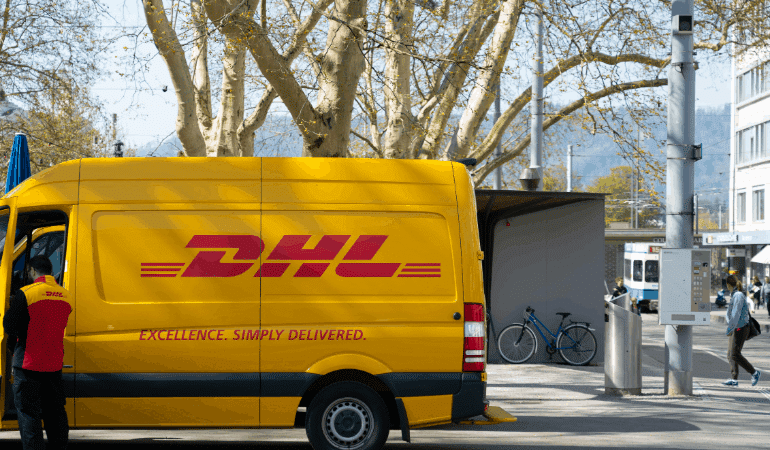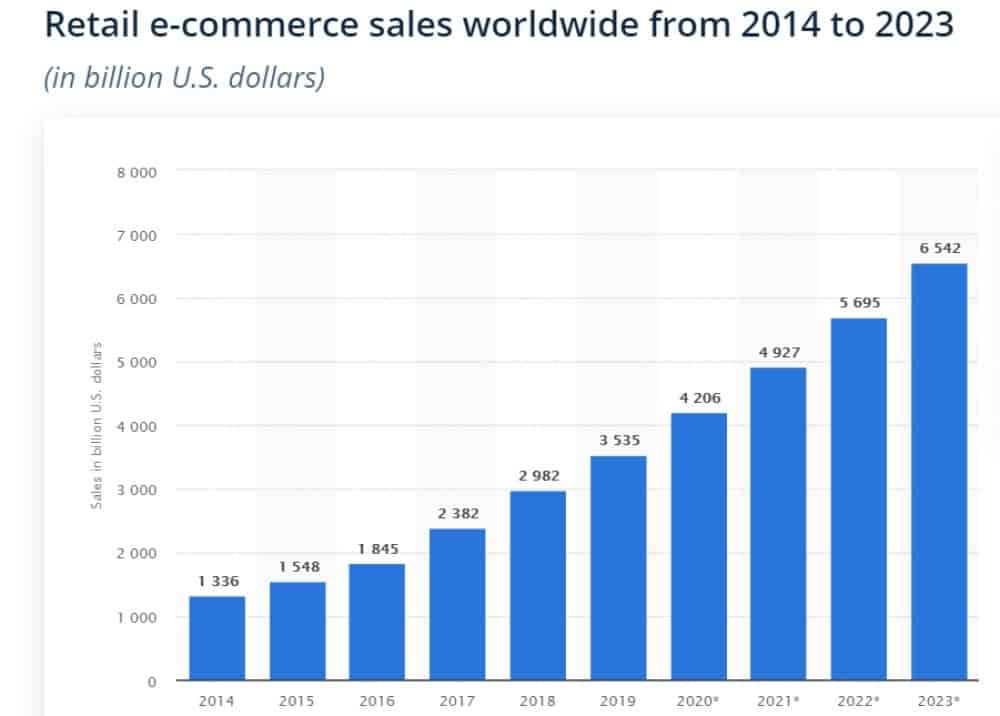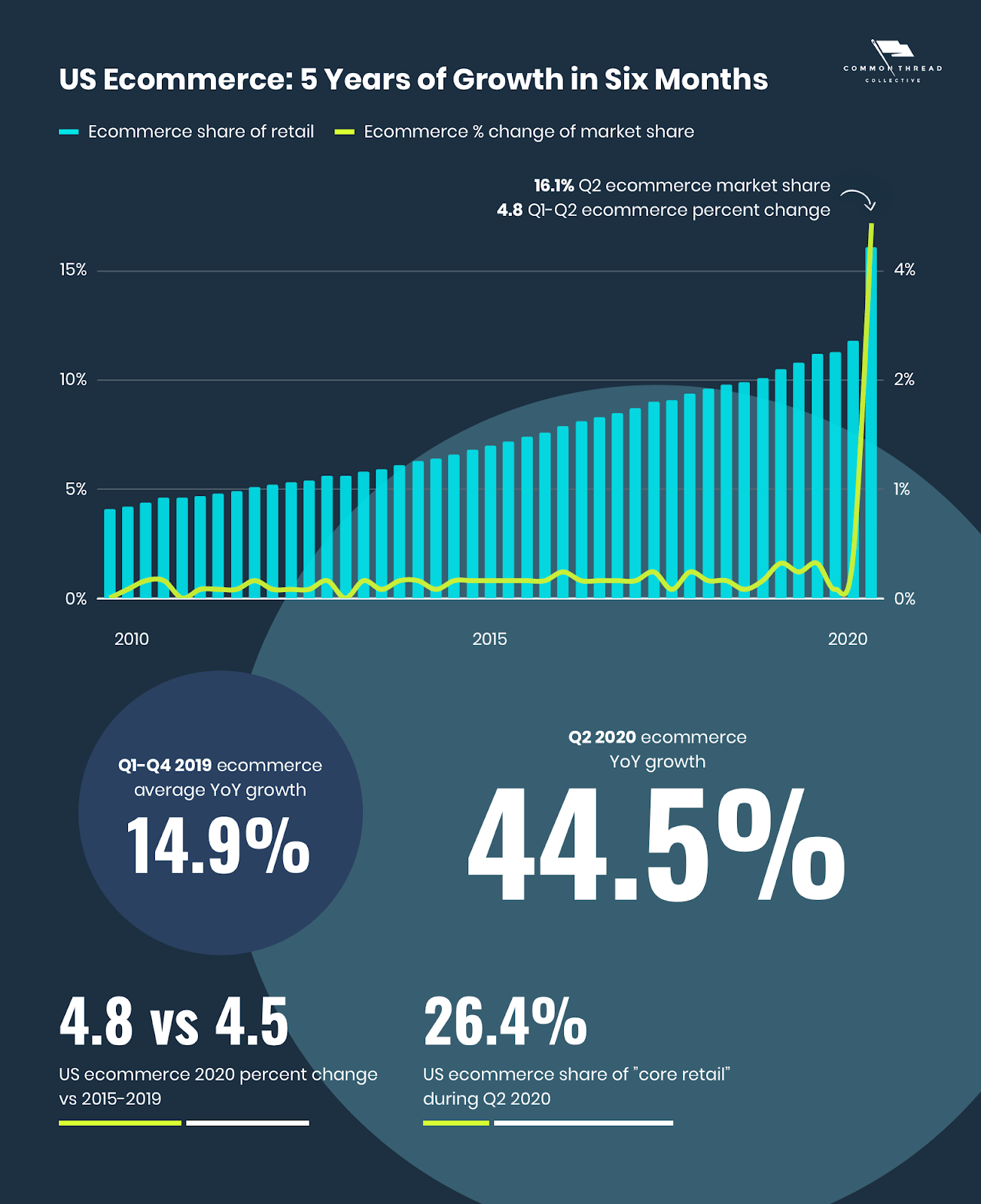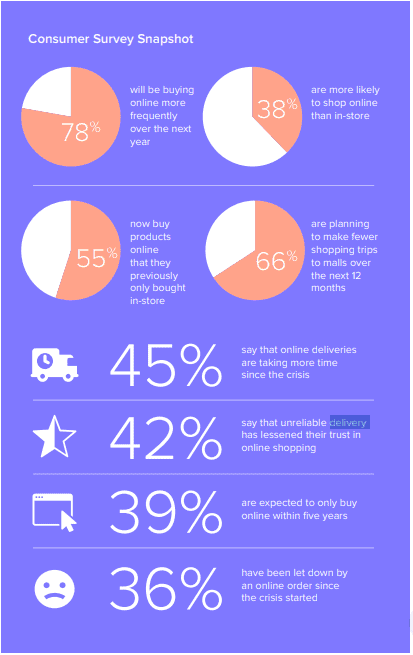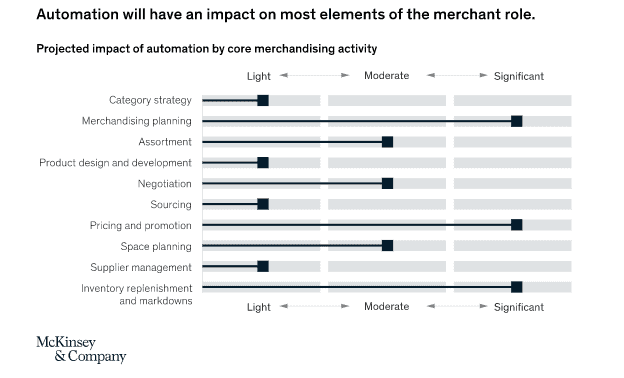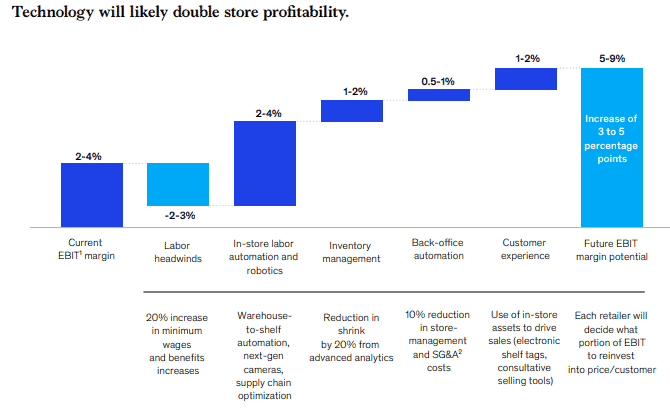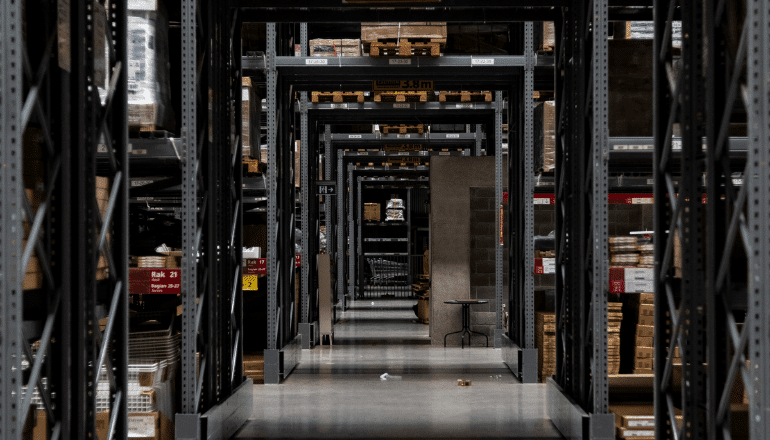Online delivery is in demand like never before. 2020 has been a steep learning curve for eCommerce brands. The outbreak of Covid-19 has turned the online sales ecosystem upside down, with a monumental upturn in sales that is now forcing eCommerce brands into action.
To cope with this unprecedented demand spike, eCommerce brands need to revisit their delivery strategies as they move into 2021. Improved delivery mechanisms and shipping methods are now essential. It’s impossible for businesses to meet the new demand without the appropriate infrastructure.
In this new environment, 2021 has the potential to be a highly lucrative year in eCommerce. But without a delivery, shipping, and inventory system that’s up to the job, your business will miss out on these new and exciting opportunities.
Ecommerce today is booming, and 2020 has catapulted online stores to new heights. E-retail revenues are set to reach $6.54 trillion by 2022, as more and more retailers and entrepreneurs start moving online. But with this growth comes new challenges and trends.
Technology can help online retailers maintain an effective delivery strategy for 2021. It’s time to move with the times and embrace the digital age.
Image by Statista
Common traits of businesses that are performing well during Covid-19
Covid-19 has been a boom or bust for online businesses. But top-performing retailers have something in common. They consistently meet -or beat- customer delivery time expectations and react to changing consumer needs with an appropriate eCommerce delivery strategy.
Common traits of ecommerce stores that are performing well during Covid-19:
- They perfect end-to-end shopping experiences
- They use visual commerce
- They experiment with dynamic pricing
- They utilize AI & AR to enhance customer experience
- They provide reliable and fast mobile commerce options – did you know that mobile devices are expected to make up 73% of total eCommerce sales by the end of 2021?
- They prioritize flawless user experiences and customer service options
- Their marketing campaigns are highly personalized
- They mobilize social media marketing
- They use metrics for profitability
- They forecast their order fulfillment quota based on inventory and warehouse capacity
- They have realistic order fulfillment goals and use them to improve fulfillment services
This is a long list. Maintaining such a complex and tech-heavy business strategy without the appropriate tools is a guaranteed dead-end. As such, these new and advanced requirements demand new and advanced tools to match. And the key to mastering these business practices is automation.
How automation saved 2020 from ruin
Companies that have seen success during Covid-19 successfully mobilize automation to streamline their business operations. Retailers that had already replaced manual processes with higher-level automation, had a huge advantage over their competitors who did not.
Whether or not your business was prepared for the pandemic, the most important thing is to start future-proofing your business for a post-Covid world. But only 56% of UK and 43% of US retailers can say that their business would survive another wave of Covid-19.
These statistics go to show that, in our current climate, automation is critical to business survival and eCommerce stability moving forward.
Photo by CommonThread
Mad4Tools
Take Mad4Tools.com, as an example. The online tool company experienced a monumental 250% spike in sales during the lockdown in Britain. Brits were using their time in isolation to make home improvements. Mad4Tools noticed this, reacted, and reaped the rewards.
By selling solely online, Mad4Tools were at an immediate advantage. A track record of super fast delivery options and excellent customer experience primed this business for success. As demand increased, Mad4Tools recognized the need for more robust systems and strategies.
These tools allowed Mad4Tools to maintain their high standard delivery experience despite the booming demand for their products. In order to achieve this, the firm partnered with Brightpearl to reinforce their technology infrastructure and maintain a successful delivery strategy in trying times.
Brightpearl allowed Mad4Tools to capitalize on the lockdown boom. Brightpearl helped them automate their eCommerce workflows holistically. Everything from order processing to inventory management and shipping was strategized and automated.
This allowed Mad4Tools to maintain their high levels of service and delivery fulfillment quotas, despite the dramatic and sudden increase in demand from online shoppers.
“This proved crucial when Amazon stopped delivery of anything non-essential.”
Paul Swain, Director, Mad4Tools.com
The take home
The take away from all of this is simple. ECommerce delivery strategies must automate to survive. Covid-19 has changed the ordering and purchasing habits of the general population and they’re not going back to how they were.
Within the next five years alone, one-fifth of UK online consumers expect to shop online only, and 39 percent of US consumers feel the same. This is the consequence of rapidly changing habits and a growing reluctance to use bricks-and-mortar shopping facilities.
Online firms should future-proof their businesses with automation. Even once the virus recedes, new online behaviors are likely to remain entrenched. Retailers need to reassess their current set-ups and consider updating their tech infrastructures.
How to succeed in 2021 with a fresh new delivery strategy
ECommerce businesses learned a lot in 2020. Moving forward into 2021, optimized delivery strategies must be top of any online retailer’s agenda. With online sales set to continue growing, revamping your eCommerce delivery strategy for the new year will give you that competitive edge.
Covid saw a shift to online eCommerce, but delivery reliability has created a crisis of confidence amongst some consumers. 48% of US buyers now say that online deliveries take longer to arrive since the crisis, and 38% of UK shoppers agree.
Brands that don’t improve their services, run the risk of missing out on one of the biggest digital opportunities in recent years. That’s why automation is more important than ever before.
Over the next year, online brands are going to have to up their game to make online deliveries faster, more reliable, and more flexible. With that in mind, let’s narrow it down with some essential delivery management advice.
1. Evaluate
Evaluate how your firm dealt with the onslaught of 2020. Identify key areas of weakness and plan for long-term changes that will allow you to capitalize on the continued demand increase set for 2021.
2. Improve Digital Infrastructure
Even once the virus recedes, online behaviors are set to continue spiking across all types of retail. It’s therefore essential that online retailers ensure their digital infrastructure is robust enough to cope with the new conditions.
Brands now have to compete with the big kids. That means Amazon. With more customers online than ever before, ease-of-purchase is key alongside swift delivery times. 36% of US customers have been let down by an online order since the crisis started. 42% say that unreliable delivery has lessened their trust in online shopping.
Prioritizing fast, reliable delivery and fulfillment is now of utmost importance. An automated delivery strategy is the best way to guarantee your services meet modern customer expectations.
3. Reduce Shipping Costs
Keep your shipping costs as low as possible. High shipping costs drive away customers. Factor in packaging size, weight, and distance in transit, and source an economical shipping provider. Using a shipping cost calculator helps keep spending down.
Flat-rate shipping has its advantages. It offers customers fixed-rate shipping prices on all orders or according to weight. If choosing this option, it’s important to be aware that not all orders will fully cover the shipping costs of a particular item.
Real-time carrier rates guarantee to cover the cost of shipping. Real-time carrier pricing charges the customer the precise value of shipping depending on their exact individual location and delivery specifications.
Offering free shipping encourages sales and reduces cart abandonment. Often it pays to raise product pricing slightly to offer a free shipping option. This lets you share shipping costs with your customers indirectly. Keep your messaging clear and product prices well-defined.
4. Offer fast, trackable shipping options
Today’s customers expect efficiency. Same-day delivery is the new normal, so onboarding a reliable courier and eCommerce shipping carrier is essential. And remember to forecast your shipping delivery capabilities to avoid costly mistakes and unfulfilled orders. The worst thing you can do is make promises you can’t keep.
Overnight shipping options can be great for ensuring deliveries arrive swiftly and on time. Amazon Prime has set a two-day shipping process benchmark. Matching this standard will stand you in good stead.
There are many shipping services available to help you meet these ever-increasing delivery demands. Three of the top shipping providers include UPS, FedEx, and DHL. Look into each in detail to see which provider suits your business and desired shipping strategy.
Same-day or next-day delivery, shipping, and returns are part and parcel of modern consumer expectations. By maintaining efficient shipping options, you’ll be all set to meet (or exceed) your customers’ delivery expectations.
Partnering up with a reliable operations system for online retailers is your best bet. By streamlining your inventory, accounts, warehouses, and shipping orders, you’ll be set to maintain a reliable service as we head into 2021.
Fairfax & Favor
Brightpearl clients and Luxury footwear retailer, Fairfax & Favor, managed their surge in demand by gearing up eCommerce operations for online sales and unpredictable sales spikes.
As such, they were able to maintain next-day delivery throughout the pandemic.Click and collect has also proven very popular during the Covid crisis, so retailers should consider adding this feature to their shipping policy.
Best practice: why Automation will be your best competitive differentiator
To meet demand, eCommerce firms must improve their logistics. Fast delivery, guaranteed order fulfilment, and excellent customer experiences are the bare minimum for online retailers. They’re no longer the USPs of the top eCommerce platforms. Automating your firm’s delivery strategy is now essential for success.
Yet, despite this, most retailers lack the agile digital retail infrastructure to manage these services on mass. Without automated technology systems, these responsibilities are beyond usual workforce capacity. But to meet modern consumer expectations this must be overcome.
Online retailers can locate their weak points and plan for long-term changes by assessing how the pandemic impacted their organization. Next, to maximize on the opportunities created by our current environment, retailers must streamline their operations strategically.
Understandably, many retailers have been struggling with the logistics of heightened demand and reduced operational capacity. For retailers to meet these challenges head-on, whilst delivering on their service promises, the ability to automate is crucial.
Automation has the power to be your best competitive differentiator. Automation can help you streamline your business, and boost efficiency and reliability. Every single operation beyond the buy button and after checkout, should be addressed and optimized through automation.
That means customer service doesn’t stop when the customer fills their shopping cart and makes an online purchase. To retain customers and meet their needs, every operation from delivery to returns and beyond has to be spot on. Automation is the most reliable way to scale up your business.
Some functions that automation contributes to, include:
- Order fulfillment
- Inventory updates
- Accounts journal creation
- Warehouse updates
- Order shipping
Image by McKinsey & Company
By improving these organizational functions, large and small businesses can compete in 2021’s fast-paced, demand-heavy, eCommerce environment. Meanwhile, you’ll be able to channel manual work hours towards brand marketing and maintaining exceptional customer care.
The long and short of it is this. Increased demand and delivery fulfillment pressures need not spell disaster. By automating your operations, you’ll stay on top of the ever-increasing demand whilst continuing to prioritize customer service and delivery fulfillment.
In other words, it is possible to have your cake and eat it. Automation makes previously impossible delivery quotas, possible, and you’ll see the results in your profit margins.
A case study – Cool Blades
Achieving streamlined, high-volume deliveries can feel like a monumental challenge, so let’s delve into a real-life case study. Launched in 2003, CoolBlades.co.uk is a UK-based professional hair and beauty company, supplying salons and stylists online.
With the rise of DIY haircuts since the onset of lockdowns and self-isolation periods, CoolBlades has managed to achieve an absolutely stonking 650% YoY sales spike. When the lockdown hit, CoolBlades was inundated with online orders overnight, almost spelling their defeat. CoolBlades’ top-selling product saw a monumental 760% increase in orders. The company’s previous stock control and order processing solutions would not have been up-to-scratch. They needed a sophisticated technology partner to streamline daily operational issues and demand spikes.
That’s where Brightpearl came in.
Luckily, the firm had foresight and improved its retail operations in 2017. Working with Brightpearl helped CoolBlades manage the demand surge and process tens of thousands of orders over multiple online channels.
Brightpearl was able to offer CoolBlades a comprehensive range of automated systems that covered everything from in house orders, logistics, shipping, delivery, and customer service. All crucial once the Covid-19 pandemic hit.
What is Brightpearl?
Brightpearl helps retailers and wholesalers to automate and grow. The complete cloud-based, automated back-office solution overcomes all streamlining issues and promotes efficient growth. Brightpearl harnesses the power of automation to transform all manner of business operations.
- Order management
- Replenishment
- Financial management
- Inventory
- Warehousing
The service allows DTC, online, and brick-and-mortar retailers to scale their businesses and streamline workflows with software. Brightpearl supports businesses individually with:
- Individual payment terms
- Multiple warehouse locations
- CRM and point of sales
- Centralized, intuitive systems
With mass eCommerce fulfillment and omnichannel services now expected – and demanded – by the average customer, effective automation is key to harnessing online retail potential. To get the most out of your eCommerce delivery strategy, it’s vital to automate your operations.
Brightpearl is an all-in-one service providing just that – a means for businesses to transform their operations for a new age of online consumerism. Automation is now the bottom line.
Image by Mckinsey.com
Drive forward deliveries for eCommerce success in 2021
With 2021 set to mark a continuation of Covid-19 consumer trends, delivery should be top of every retailer’s agenda. Delivery is at the heart of online order culture. By maintaining reliable, fast, and trackable delivery options, you can ensure higher levels of customer loyalty.
2020 was the year the pandemic hit. Covid-19 had a tragic and cataclysmic impact on many brick-and-mortar retailers. But this virus need not mean the end of business profitability. Covid-19 has catapulted retail and entrepreneurship well and truly into the age of eCommerce.
With appropriate planning, streamlining, and automation, online business can be primed for success in 2021. As case studies have already gone to show, increased consumer spending online has the potential to increase eCommerce profitability exponentially over the following year.

